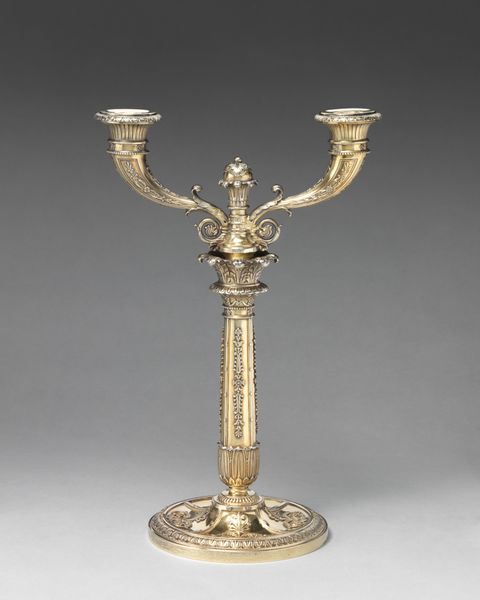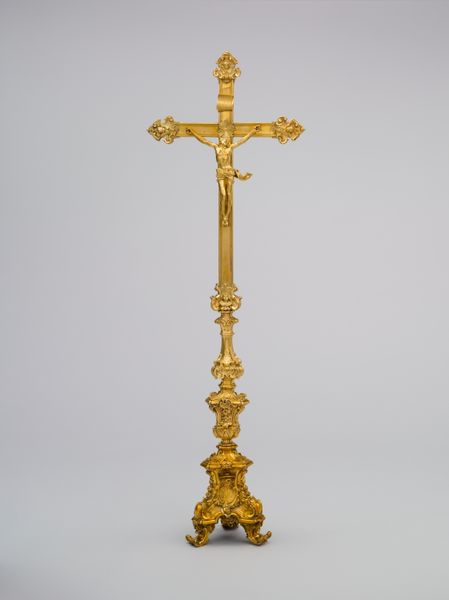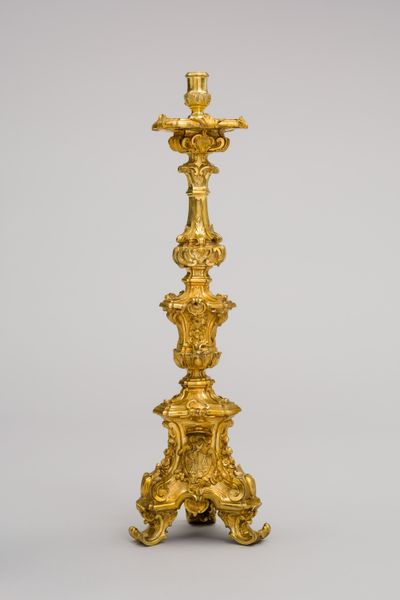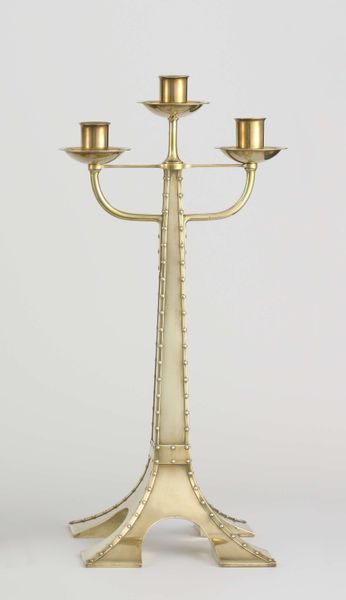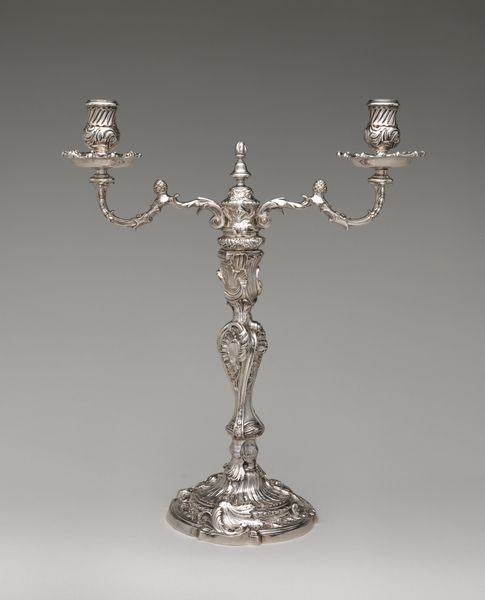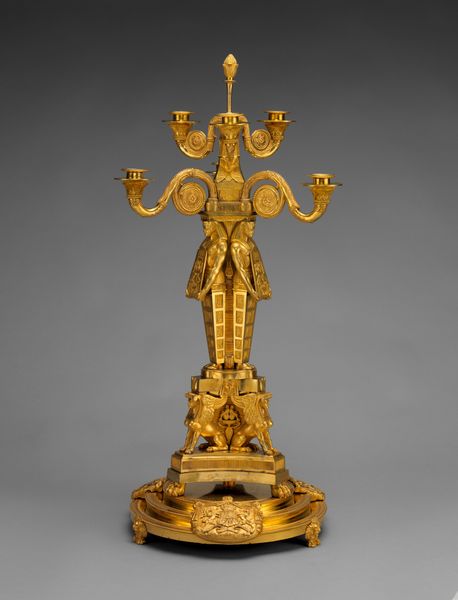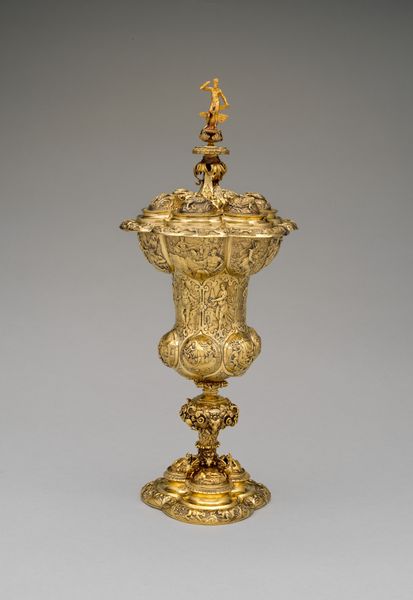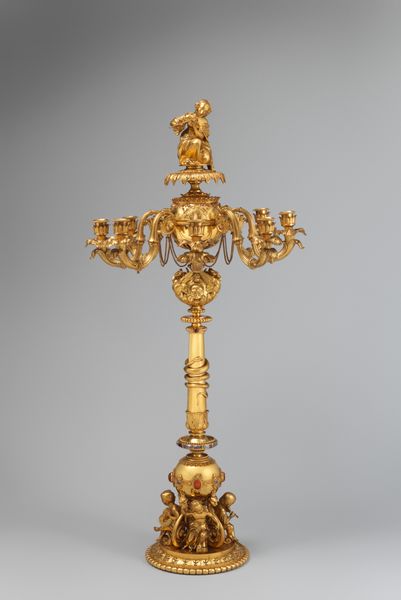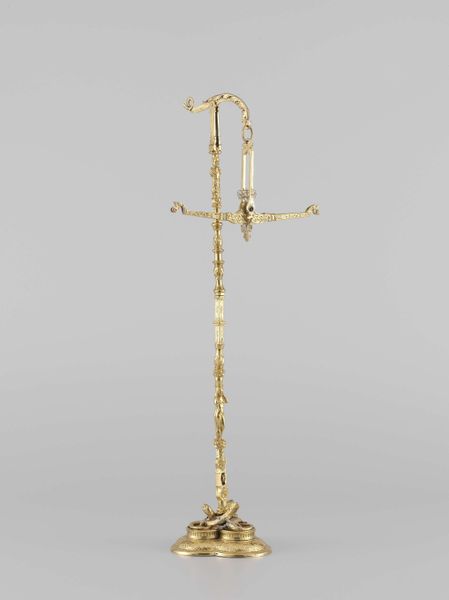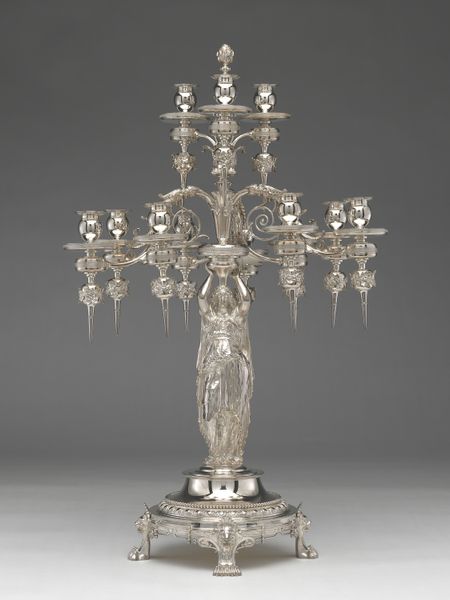
brass, metal, sculpture
#
brass
#
metal
#
sculpture
#
romanticism
#
decorative-art
Dimensions: wt. confirmed: 33 in., 12.6 lb. (83.8 cm, 5.7 kg)
Copyright: Public Domain
Curator: It feels both delicate and powerfully symbolic, doesn’t it? Like it holds a hidden story in its polished metal. Editor: Indeed. What you are seeing here is an ornate, mid-nineteenth century brass candelabrum designed by Augustus Welby Northmore Pugin, located here at the Metropolitan Museum of Art. Curator: Pugin! The name rings with echoes of Gothic cathedrals and stained glass… but to see that aesthetic condensed into something for the table, not the altar… that's interesting. It gives me strong medieval vibes, maybe because of all those points like battlements around where the candles sit. Editor: Precisely. The piece embodies his conviction that good design could elevate moral character. Notice the verticality, the pointed arches echoed in miniature. These are visual reminders of aspiration and divine order. It’s a theatrical display of faith. Curator: But isn’t that interesting in itself, this conflation of the domestic and the devotional? Were these actually used? Can you imagine a room lit like that? Editor: Evidence suggests it saw practical use in domestic spaces; certainly, this reflects a desire to incorporate ritual, even beauty, into everyday life. Beyond its obvious function, a candelabrum symbolizes enlightenment. Pugin creates his candelabrum in 1846, a time when candles still lit daily existence, but electricity began to shine on the horizon. A piece such as this one marks an era about to wane. Curator: Like holding onto tradition while knowing the world is on the verge of profound change... like illuminating the anxieties of transition with these little flames! Knowing how turbulent the Victorian era was, imagining the subtle flickering must have had some strange comfort. Editor: That liminal space makes these designs all the more poignant. One imagines it standing on a sideboard, ready to project light while history unfolds around it. Curator: So, more than just decorative, it’s a symbol for change— personal and historical. Something like this truly transcends eras, which maybe proves Pugin's vision about good design's morality.
Comments
No comments
Be the first to comment and join the conversation on the ultimate creative platform.
